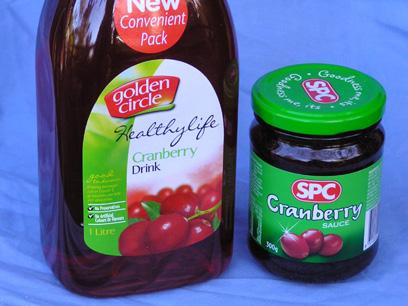
4 minute read
DID YOU KNOW?
Cranberry compound found to block cancer
Compounds in cranberries, thought to help prevent urinary infections, may also fight the development of cancer, report US researchers. The chemicals, called proanthocyanidins, inhibited the growth of human lung, colon and leukaemia cells in culture, without affecting healthy cells. They could also stop cancer from spreading, showed the tests. The work by Catherine Neto at the University of MassachusettsDartmouth, USA, and colleagues is important as it is one of the first studies to look closely at the compounds in this fruit that are responsible for anti-cancer activity. “Anti-cancer activity has been reported in the literature from way back but there is no good real data on the structures [in cranberries],” Neto told NutraIngredients.com. There are several groups of antioxidant compounds in cranberries that could protect against cancer, she noted, including quercetin and ursolic acid. But while cranberry extracts have previously been shown to inhibit human cancer cells, in most cases the researchers did not identify the active constituents responsible for such an effect. Moreover, while proanthocyanidins from grapeseed have been linked to cancer inhibition, the structure of these chemicals is significantly different in cranberries compared with other berries. “Unlike most fruit, cranberries contain PACs with A-type linkages between units, a structural feature identified in cranberry PACs with antibacterial adhesion properties and those with LDL-protective properties,” write Neto and colleagues in the Journal of the Science of Food and Agriculture. “Previously published reports have suggested that cranberry proanthocyanidins have anti-cancer properties but there are few data on tumour growth inhibition by well-characterized cranberry proanthocyanidins,” they note. The authors isolated a proanthocyanidin-rich fraction of a whole cranberry extract made from fruit donated by USbased Decas Cranberries. The fractions were tested on several tumour cell lines and screened for their effect on tumour proliferation. The study showed significant inihibition of the proliferation of cancer cells, not previously shown with other proanthocyanidins, as well as the blocking of tumour growth. “The activity was at no less than 100ug/mL concentration,” said Neto. “It’s hard to say whether you would get these levels distributed to different tissues to the extent where you would have activity in vivo,” she added. But eating cranberries or taking supplements of extract could be helpful, she believes. “There are so many compounds in cranberries capable of having some anti-cancer mechanism that when taken together there is potential for benefit,” she said. There are probably several mechanisms for the cranberry’s anti-cancer action, said Neto, but further work needs to be done to clarify this. “We’re hoping to follow up with animal models. It’s really important to do this. These compounds are not at all well-known so I think of this [new study] as opening a door.”
source: FoodProductionDaily.com
Exercise for the Brain
Leisure-related physical activity in midlife may decrease the risk of dementia in later life according to Scandinavian researchers. They followed 1449 adults, with an initial mean age of 50 years, for an average of 21 years. By this time 117 had dementia and 76 had Alzheimer’s disease. Participants had been asked, in midlife questionnaires, “How often do you participate in leisure-time physical activity that lasts at least 20-30 minutes and causes breathlessness and sweating?” Those who had engaged in leisure-time physical activity at least twice a week at midlife had 50% lower odds of dementia compared with sedentary participants. This protective effect seemed more pronounced for Alzheimer’s disease and among APOE e4 carriers. source: Lancet Neurology Online
Where are They now ……?
Fred Veler – formerly of Eltham College and Nillumbik Orienteers in Victoria. Fred now competes for Sammamish OC in Washington State, USA. Last August he finished 5th in M60 in the 2005 Colorado 5-Days and 3rd in M60 in the US Night-O Championships.
Champion tracking
A secret weapon in Australia’s bid for swimming success at the coming Commonwealth Games may well be hidden in the swimmer’s trunks. “Traqua”, developed by the CRC for microTechnology for the Australian Institute of Sport (AIS), is used by the nation’s elite swimmers and is being evaluated for other sports. “It’s all about efficiency - the 1 percent gain: how much you put in, and what you get out of it,” explains AIS senior sports physiologist Dr Tony Rice. “Traqua” consists of an unobtrusive plastic case containing micro-machined, inertial sensors, digital recording and radio equipment. These sense the athlete’s movement and position in the water, analyse and report it to the coach, who can then provide immediate advice on overcoming any flaws. “Most sports measurements are still fairly basic - often just a stop watch and distance,” says microTech’s Shaun Holthouse. “Traqua enables the coach to analyse the athlete’s motion stroke-by--stroke in real time. “We expect electronics to become an integral part of most sports equipment. Whereas today you buy just a tennis racquet, in the future you will buy a racquet that tells how you compare to champions.” The same technology also has potential uses in healthcare - for example in remote monitoring of patients at risk of a fall. “Traqua” technology was developed within the CRC for microTechnology by Griffith, Swinburne and RMIT universities and engineering firm iWRX.









